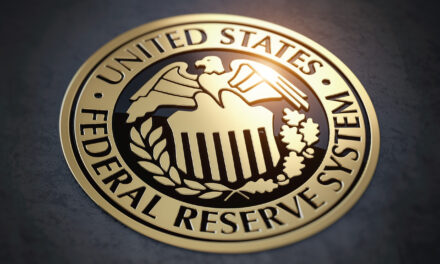The recession indicators are there: tighter monetary policy from the Fed, a Treasury yield curve inversion, a stock market collapse to end 2018, weaker housing activity, soft consumer spending, a horrendous jobs report for February, when just 20,000 jobs were created, trade wars and a global economic slowdown.
On and on it goes as the warning signs continue piling up.
It’s possible the current softening is temporary, but that would only bring more Fed restraint. The central bank would like to raise rates as much as possible in order to slash them again when the next inevitable recession occurs. The current 2.25 percent to 2.5 percent range doesn’t give the Fed much leeway to fend off the next collapse.
Per Bloomberg’s A. Gary Shilling:
“Recession” conjures up specters of 2007-2009, the most severe business downturn since the 1930s in which the S&P 500 Index plunged 57 percent from its peak to its trough. The Fed raised its target rate from 1 percent in June 2004 to 5.25 percent in June 2006, but the main event was the financial crisis spawned by the collapse in the vastly-inflated subprime mortgage market.
Similarly, the central bank increased its policy rate from 4.75 percent in June 1999 to 6.5 percent in May 2000. Still, the mild 2001 recession that followed was principally driven by the collapse in the late 1990s dot-com bubble that pushed the tech-laden Nasdaq Composite Index down by a whopping 78 percent.
The 1973-1975 recession, the second deepest since the 1930s, resulted from the collapse in the early 1970s inflation hedge buying of excess inventories. That deflated the S&P 500 by 48.2 percent. The federal funds rate hike from 9 percent in February 1974 to 13 percent in July of that year was a minor contributor.
The remaining eight post-World War II recessions were not the result of major financial or economic excesses, but just the normal late economic cycle business and investor overconfidence. The average drop in the S&P 500 was 21.2 percent.
At present, I don’t see any major economic or financial bubbles that are just begging to be pricked. The only possibilities are excess debt among U.S. nonfinancial corporations and the heavy borrowing in dollars by emerging-market economies in the face of a rising greenback. Housing never fully recovered from the subprime mortgage debacle. The financial sector is still deleveraging in the wake of the financial crisis. Consumer debt remains substantial but well off its 2008 peak in relation to household income.
Consequently, the recession I foresee will probably be accompanied by about an average drop in stock prices. The S&P 500 fell 19.6 percent from Oct. 3 to Dec. 24, but the recovery since has almost eliminated that loss. A normal recession-related decline of 21.2 percent — meeting the definition of a bear market – from that Oct. 3 top would take it to 2,305, down about 18 percent from Friday’s close, but not much below the Christmas Eve low of 2,351.




